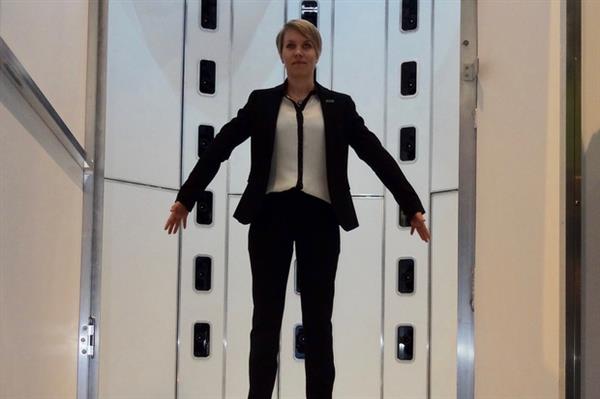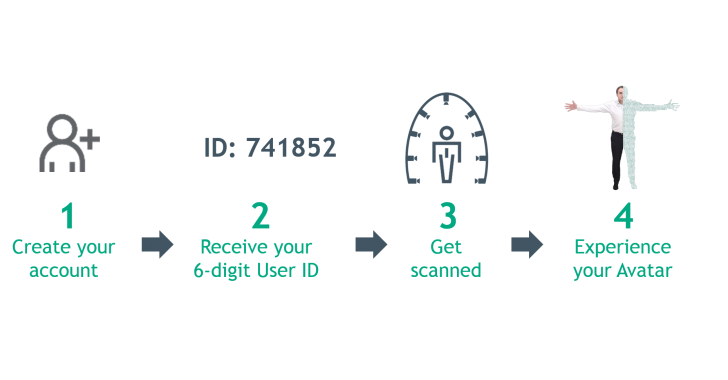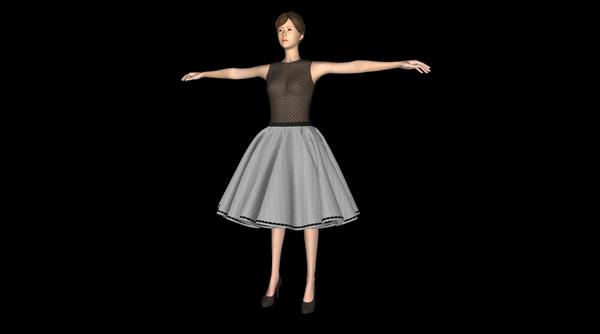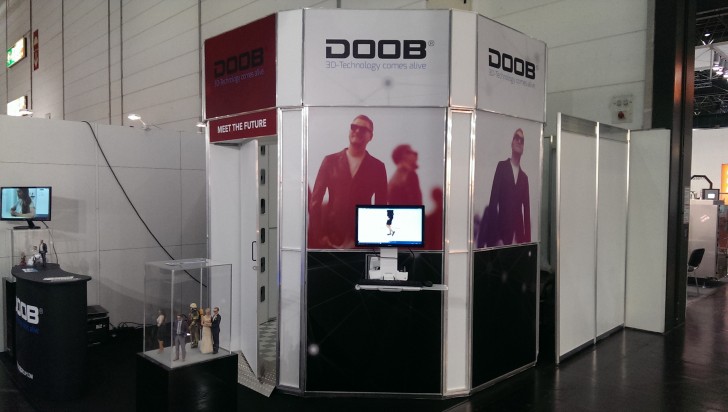From a New Jersey mall to your very own smartphone, full-body 3D scanning has been emerging as a fun and entertaining way to capture our true selves in the digital world. This week, at the CeBIT trade show in Hanover, Germany, tech giants Hewlett Packard Enterprise unveiled a full-body scanner of their own. The scanner is a part of the Avatar Platform, a process that digitally captures 3D models of people, and then allows for those models to be digitally clothed and animated. The Avatar process incorporates products from three different companies, used by HPE in an attempt to usher in a new way to try on clothes in the digital world.

It all starts with the full-body 3D scanner, which was built by the German-based 3D technology company Doob Group. The scanning booth takes 64 pictures simultaneously, using an array of cameras that are stacked throughout the scanner. These images are then transferred into Quantum Matrix’s Quantum Human software package, which stitches the group of pictures together into a 3D model of the scanned subject. The final step comes from South Korea-based Physan, who has simulated the virtual clothing that the 3D model can try on. The clothing is based from original manufacturing patterns, and reportedly has realistic effects, such as folds and curves that garments take on while hanging from the body, for instance. Though the 3D scanning process itself takes less than a second to complete, the entire generative process takes about eight to ten minutes.
The HPE Avatar Platform system is only in its prototype stage, and costs about €120,000 ($135,000), which they hope they can eventually bring down somewhere between €10,000 to €15,000 through scaling. As for the Doob Group’s 3D scanner, they’ve already popped up in stores in New York, Los Angeles, Berlin, as well as its hometown of Dusseldorf, where they scan and sell customers 3D printed models of themselves. One of the target markets is certainly for online clothing retail, which HPE feels an investment in Avatar would reduce cost of returns over time. In fact, HPE estimates that by allowing customers to digitally try on clothing reduce the return rate by 10%, which would save clothing companies up to $36 billion each year. But there are other applications that their system could be utilized for.
The Avatar Platform could also be potentially implemented in fitness centers, which would allow customers to take and compare full-body scans from over time, allowing them to see their physical progress in a digital dimension. Another potential market is gaming; the Avatar could someday allow players to integrate a 3D model of themselves directly into gameplay, which could definitely help increase player engagement. Though it is currently in the pricey prototype stage, HPE is foretelling a future where our physical figure will soon be represented more and more in the emerging digital reality.




Leave A Comment